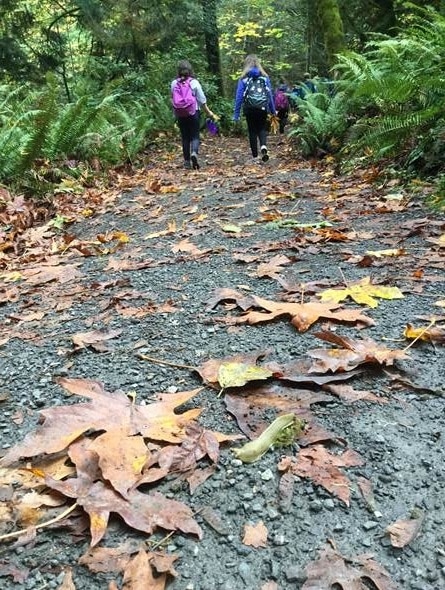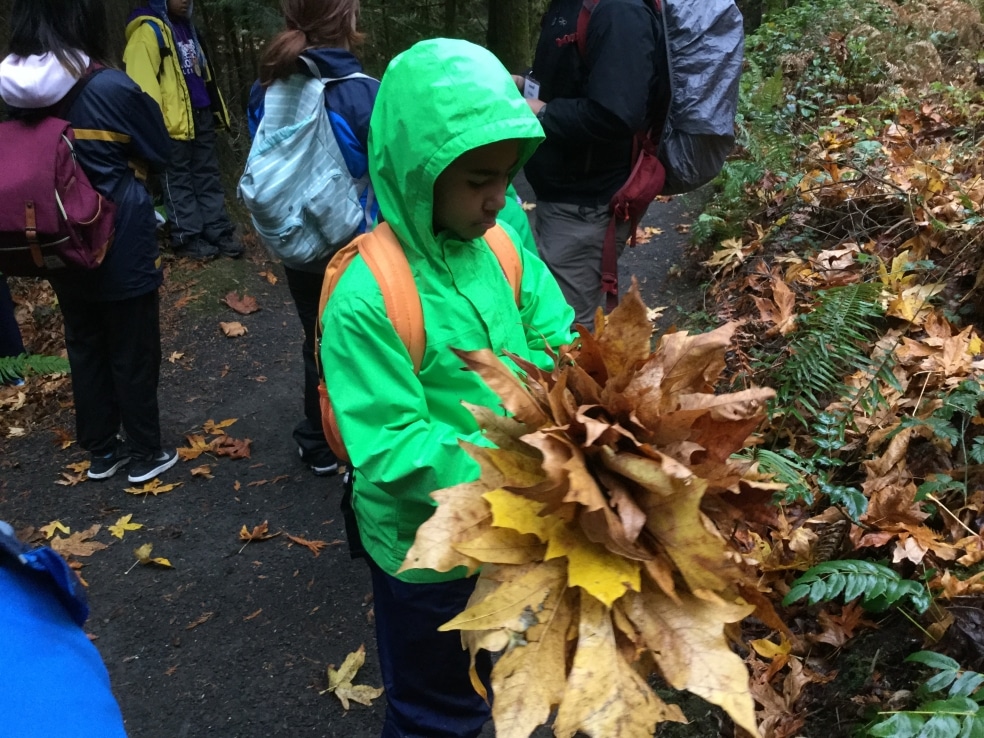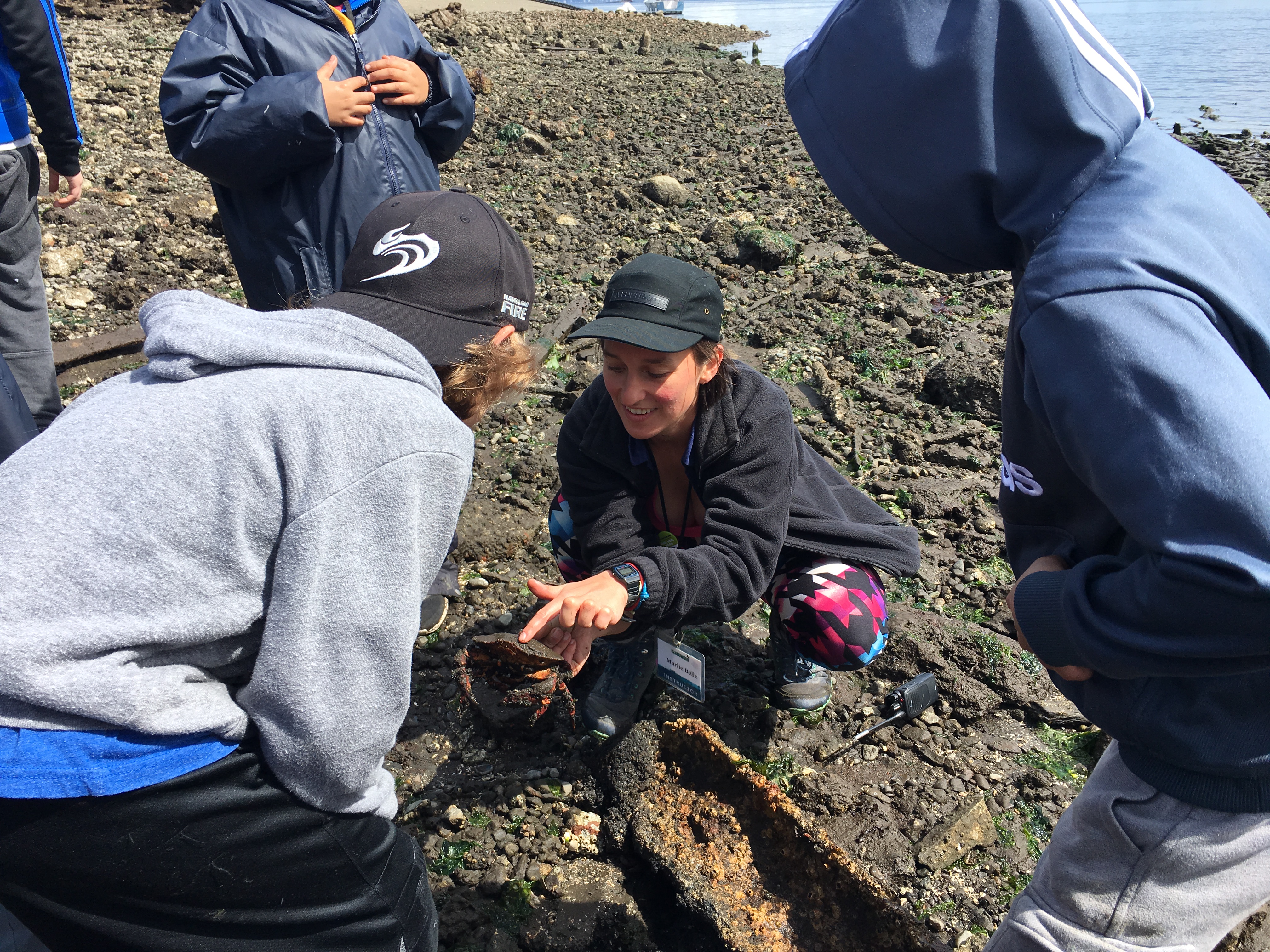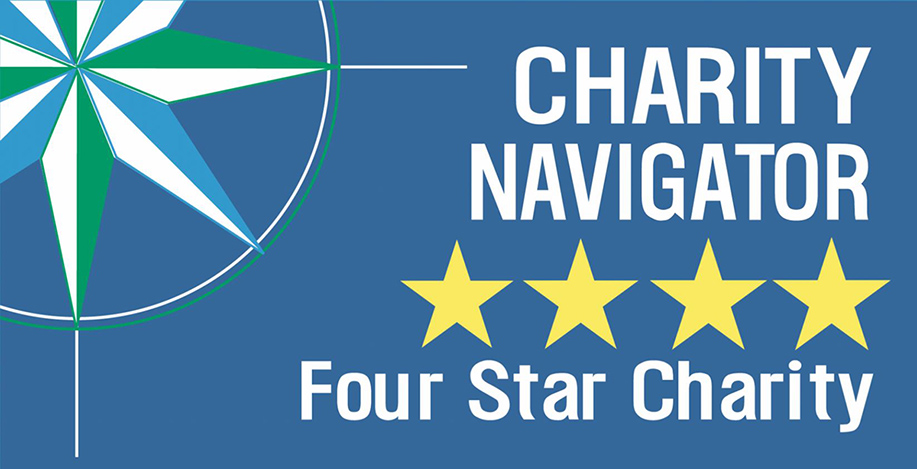We’re thrilled to share a new initiative that we have recently formalized,
Author: Caroline Bargo, graduate student
October evokes spooky imagery for many people. For the students who visited during the week of Halloween, School Overnight Program instructors did our best to make sure there was a healthy mix of whimsy and Halloween flair along with our traditional curriculum. That week, I committed myself to helping my students conquer their fears and giving them tools to do so when they returned to their communities.

School Overnight Program students walk on a tree-lined path at IslandWood.
When I ask my students to do something that may be scary for them, I use the IslandWood standby, “Challenge by Choice.” To illustrate their options, we lay two sticks across one another so that they intersect like the long arms of the letter A. I preface the activity by saying “Everyone is going to make it over these sticks, but it’s up to you if you jump over or step over.” I demonstrate the leap needed to clear the wide opening at the bottom versus the step needed to clear the point where the sticks meet at the top. With each new challenge they encounter during SOP, students can decide for themselves if they want to take the leap or simply take that first step.
As we walked through the IslandWood campus during Halloween Week, I asked students to choose two leaves on the ground that called to them. Fall has brought the beautiful yellow gold leaves shimmering down off of many of our alders and big leaf maples, and students enjoy picking their leaves out of the thousands dotting the sides of the trails. As we neared our destination, I asked my students to sit down and distributed their journals. We sketched our leaves with care, adding any distinguishing marks that made them special. When students had finished getting to know their leaves and recording them in their journals, I asked them to make their leaves into symbols of their fears. I asked that they choose one “outside” fear, and one “inside” fear. An outside fear means something in the outside world you are scared of, like spiders or heights. An inside fear is a more personal fear, like the fear of speaking in public or losing a pet or parent. After we journalled about these fears, I asked students to brainstorm what it would feel like if those fears were to leave us entirely. They responded with “We would feel free,” “It would be nice,” “Maybe we would just find something else so be scared of.”
“Well, it’s worth a shot to find out, don’t you think?” I asked my field group. I received puzzled stares, as expected. I asked students to pack up and bring their leaves with us to our next location—the Suspension Bridge. As students approached and saw the bridge hanging between the two sides of the ravine, I heard everything from excitement to dread. I was certain I had at least one student who had designated “fear of heights” as one of their leaves. I explained that we would be dropping our leaves off of the side of the suspension bridge. Symbolically, we would be getting rid of our fears as we did this. Scientifically, we would be observing how long it took our leaves to get down to the forest floor and the path that each took to get there.
“Who will be timing us? Our hands are full,” one student wondered out loud. It was a great question, and one I’d hoped someone would ask. Students were put in pairs and given stopwatches. We came to a consensus that one partner would drop their leaf while the other timed the leaf falling, using verbal cues to know when to start and stop. Students realized that dropping and timing the leaves would be tricky without a partner. My educator brain was hoping that they realized they were each a crucial part of not only their own experiences on the bridge, but of their partners. Giving students responsibility for another’s success is one of my favorite ways to ensure that they feel valued as part of our field group community.

School Overnight Program students investigate falling leaves on the Suspension Bridge.
Afterward, during the debrief portion of our lesson we talked about the literal path of each leaf: small alder leaves traveled in tight spirals whereas the big leaf maple leaves zigged and zagged on their descent. We also talked about how it felt to get rid of these fears off of the Suspension Bridge and to watch them float away, to be engulfed by the other thousands of leaves littering the forest floor. One student, who by her own admission had a lot of anxiety about coming to IslandWood, stated, “The fear may not be entirely gone. It may be in the back of your mind. But at least you know it has traveled to the back, and maybe it will keep going until it leaves entirely.” We discussed methods of getting rid of fear that we could do when back at school. One student remarked that we may not have a suspension bridge, but we can write down our fears and throw them away, journal about them, or draw to let go of those fears.
Later that night, as our field group approached our outdoor evening program, I could feel that some of my students were intimidated by the darkness. Many students who visit IslandWood don’t get much of a chance to be in the forest, much less a forest at night time. We visited the Suspension Bridge again and called upon those fears we had dropped earlier in the day to give us strength as we sat on the bridge and listened to the soft drops of rain on the maple leaves, the toads croaking, and the stream underneath us. It was a night to remember, and I felt proud that my students were able to rid themselves of unnecessary fears that do not serve them on their journey through SOP and life.










